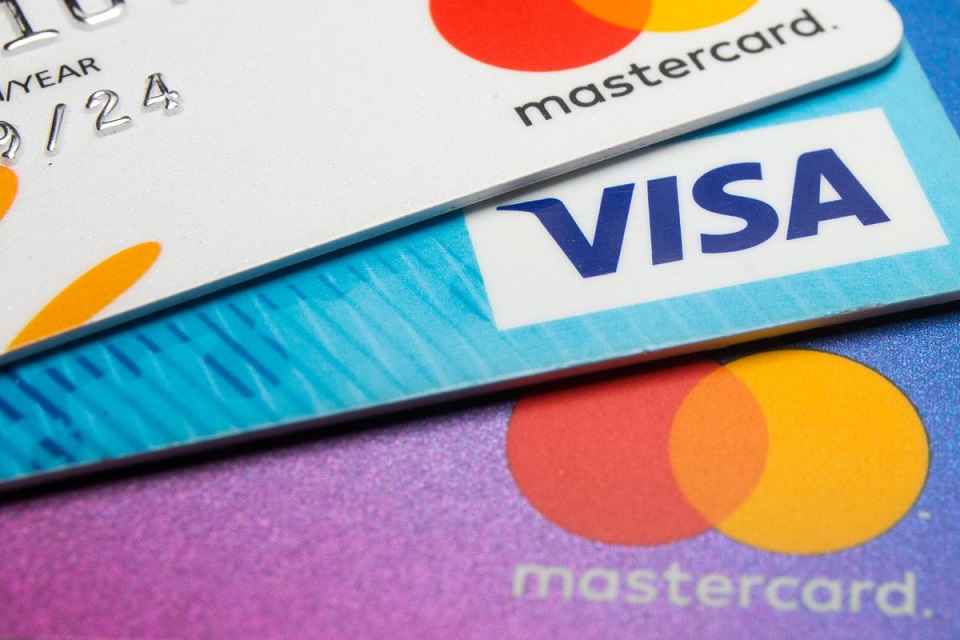One of cryptocurrency’s earlier problems was integrating it into users’ daily lives, paying for groceries, flights, shopping, etc.
To bridge this gap, crypto credit/debit cards were born. But, the cards initially had no incentives to drive their adoption. However, this is slowly changing with the introduction of staking.
Simply put, crypto staking is the process of holding or locking cryptocurrencies in a cryptocurrency wallet to facilitate activities on the coin’s native blockchain and earn interest. When Bitcoin was born, it introduced a computing power-intensive consensus mechanism called proof-of-work.
However, the inefficiencies in this system led to the introduction of a proof-of-stake mechanism. The staking fever has now spread from ordinary cryptocurrency wallets to credit/debit cards that support virtual currencies.
Major crypto credit/debit cards that support staking
MCO VISA card
It’s issued by Crypto.com and can be used in the United States, Europe, among other countries around the globe. The VISA card is available in five distinct variations, with each card attracting a different cashback limit per purchase.
For example, the highest valued MCO crypto Visa card has a monthly withdrawal limit of $1,000 without fees. MCO VISA cards can be used on Spotify, Amazon Prime, Netflix, Airbnb, and Expedia.
Apart from saving on fees, Crypto.com cards support the platform’s native token, CRO. CRO can be staked to earn interest. The card allows funds to be staked for six months with staking rewards paid in CRO tokens. Learn more about this platform in this Crypto.com review.
Binance Card
Paying directly with Bitcoin or another cryptocurrency is not very common yet. It still seems a little early for all retailers to accept Bitcoin directly. Binance is now coming up with a solution for this, it’s called the Binance Card. The card works just like a normal debit card, only you can directly top it up with Bitcoin or Binance coin.
To use the card you need the Binance Card in combination with the Binance Card App. These two together with your Binance account will ensure that you will be able to pay with your Bitcoin or Binance Coin anywhere in the world in the long run.
At the time of writing, the Binance Card can be used at more than 60 million merchants worldwide and is delivered in cooperation with Swipe. On top of that you pay zero service and transaction fees. Based on your holdings you will receive a cashback up to 7%.
The card will not change much in our daily lives. However, it is an easy way to pay with cryptocurrency without the merchant having to specifically accept Bitcoin. Learn more about this card and the platform in this Binance review.
BlockCard
BlockCard is another crypto credit card that supports staking. With this card, a user can earn a maximum of 6.38 percent as staking rewards, making it one of the most attractive staking crypto credit cards today. BlockCard’s staking rewards accumulate when paying for phone bills, streaming subscriptions, gas, travel, and groceries.
Elitium
The Elitium crypto credit card supports over 13 cryptocurrencies, including Bitcoin (BTC), Ethereum (ETH), and Litecoin (LTC). It also has a native token known as EUM. Staking on Elitium attracts rewards of up to 6.5 percent per year. Also, the dividends can be paid every month. The process of staking on the platform is simple since an Elitium user only needs to deposit EUM into their account and wait for rewards. According to its website, the staking program is designed for virtual currency enthusiasts, traders, speculators, and those exploring the crypto world.
Advantages of crypto credit/debit cards
As cryptocurrency Visa cards continue to infiltrate digital currency payments, they bring a host of benefits to their users. For example:
- They are simple to use compared to manually transferring funds from one wallet to another.
- Most crypto debit cards hold both crypto and fiat currencies giving holders versatility in payments.
- The cards are flexible and easy to carry around.
- No need to remember the complicated passwords to crypto wallets and the intimidating wallet addresses.
Conclusion
Crypto credit cards such as those from Crypto.com or Binance enables more people to embrace cryptocurrencies as part of their daily lives. As virtual currencies continue to make a mark on the digital payments scene, virtual currency credit cards will slowly form the basis of cryptocurrency adoption.








Add Comment